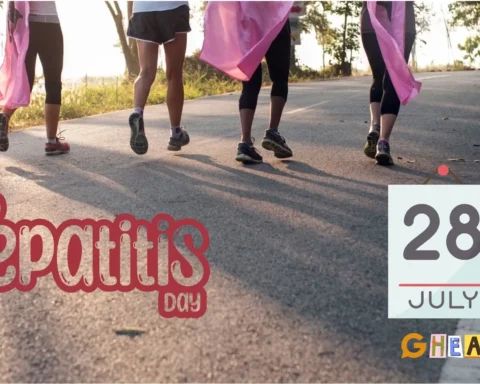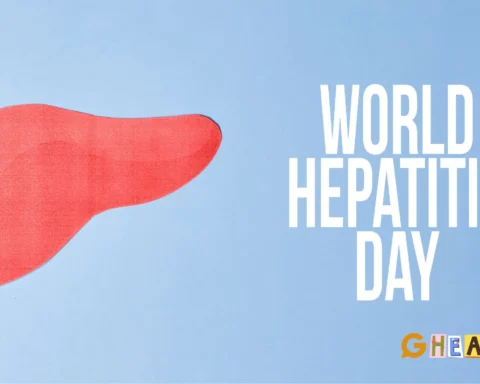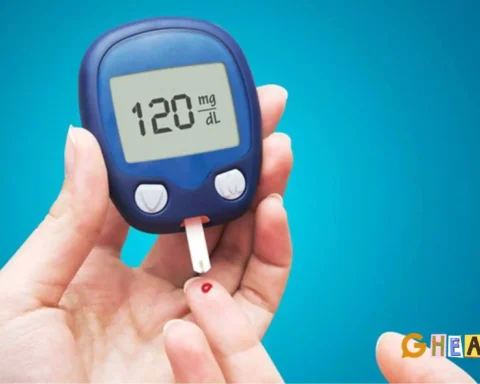Who said life with diabetes has to be bland and boring?
So, you have been told that the threshold has been crossed. All the while you had it, you did not know.
How about taking the right food journey for you now? Do not worry. With the best diet for type 2 diabetes, we have you covered.
Many do not have any of the usual symptoms, such as excessive thirst, frequent urination, fatigue, blurry vision, sudden weight loss, memory loss, irritation, frequent infections and slow-healing wounds.
You have checked all the boxes, consulted a healthcare provider, and are now in the know. The next best thing to ‘prevention is better than cure’ is ‘knowing early enough’.
Table of Contents
Food Groups
There are several food groups and healthy diets that give us the necessary nutrition. It is wise to know these and their varied roles to avoid the risk of complications such as kidney disease, nerve damage, and heart disease. You should eat food from each group every day. How much food you should eat from each group depends on your age, sex, and how active you are.
Carbohydrate foods give your body energy. Yet, they also raise your blood sugar higher and faster than other kinds of food. Low-carb diets are recommended for diabetes diets.
Here is a list of the food groups and their role in maintaining good health conditions along with a balanced diet:
Whole grains
Whole grains are a beneficial food source for individuals with diabetes due to their high fibre content, which helps regulate blood sugar levels and improve insulin sensitivity. Additionally, whole grains contain essential vitamins and minerals that promote overall health.
Some healthy choices are brown rice, whole wheat, quinoa, oats, barley, buckwheat, millet, amaranth, wild rice, sorghum, and whole-grain corn.
Lean Proteins
Lean proteins are an essential part of a diabetes-friendly diet, as they can help manage blood glucose levels.
Here's a list of sources of protein (lean) to include in your diet:
Animal products are beneficial for diabetics. Skinless poultry (chicken or turkey breast); lean cuts of beef (such as sirloin or tenderloin); pork loin, lean cuts of lamb; fish (fatty fish - salmon, mackerel, sardines); animal products and seafood (shrimp, crab, clams, other shellfish); tofu, and tempeh; plant-based sources like legumes (lentils, chickpeas, black beans), edamame, and seitan (wheat gluten) are nutritious foods.
Incorporating these lean protein sources into your meals can help you maintain stable blood glucose levels.
Vegetables
Including a variety of non-starchy vegetables in your diet is crucial for diabetes control, as they are rich in fibre, vitamins, and minerals. Nonstarchy vegetables are low in carbohydrates and high in fibre, which can help regulate blood sugar levels and improve insulin sensitivity.
It’s important to note that portion sizes and preparation methods can affect the nutritional value of these foods. Steaming or roasting vegetables is a healthier option than frying.
Here's a list of vegetables to consider:
Leafy greens (spinach, kale, collard greens, Swiss chard), broccoli, cauliflower, Brussels sprouts, cabbage, bell peppers, zucchini, asparagus, carrots, tomatoes, cucumbers, green beans, eggplant, onions, mushrooms, garlic, celery, peas, radish, artichokes, spinach, okra, squash, and lettuce are beneficial.
These vegetables can be prepared in various ways, such as steaming, roasting, grilling, or consuming them raw in salads.
Fruits
Fresh fruit is an excellent source of vitamins, minerals, and fibre. However, people with diabetes need to be mindful of their sugar intake. According to the American Diabetes Association (ADA), fruits with a low glycemic index are the best choice for people with diabetes. Diabetics should consume no more than two to three servings of fruit per day.
Here's a list of fruits that are relatively lower in sugar and can be included:
Berries like blueberries, strawberries, blackberries, and raspberries are nutritious and offer various health benefits. Blueberries may reduce the risk of heart disease and diabetes. Strawberries may lower inflammation and blood pressure while improving heart health. Blackberries can improve heart health and brain function. Raspberries may reduce oxidative stress, inflammation, and blood pressure while improving heart health. (Source: hsph.harvard.edu )
Cherries and apples are low in calories and high in fibre. Apples have antioxidants and vitamins. Cherries can inhibit inflammation. Peaches are low in calories and high in fibre.
Pears, plums, kiwifruit, and papaya help with diabetes control.
Oranges and grapefruits are high in fibre, and vitamin C. Grapefruit also has a flavonoid shown to improve insulin sensitivity. Oranges have flavonoids that can restrict inflammation.
Watermelon should be consumed in small bits and cantaloupes in moderation.
Avocado is technically a fruit with low sugar.
It's essential to track your blood sugar levels to determine which piece of fruit works best for you. Additionally, it’s best to eat whole fruits rather than fruit juices, which can be high in sugar and lack fibre.
Dairy and its alternatives
Dairy products are a good source of calcium and protein, but they can also be high in saturated fat. For people who want blood sugar, it’s crucial to choose dairy products that are low in fat and added sugars.
Here are some options for dairy and dairy alternatives for diabetes control:
Dairy:
Low-fat dairy products such as low-fat milk, Greek yoghurt, skim milk, low-fat yoghurt, and low-fat cottage cheese are some healthy food choices.
Dairy Alternatives:
Almond milk is low in calories and carbohydrates. Soy milk is low in fat and high in protein. Coconut milk is high in fat, but it’s also low in carbohydrates.
Rice milk is not recommended as it is rich in carbohydrates. Unsweetened oat milk and cashew milk can help with diabetes control.
Healthy Fats
Healthy fats are an essential component for people with type 2 diabetes, as they can help stabilize blood sugar levels and support overall health. Saturated fats increase blood fat and can lead to heart disease.
Here are some sources of healthy fats to consider for diabetes control:
Almonds, walnuts, chia seeds, flaxseeds, and hemp seeds are sources of healthy fats, fibre, and magnesium, aiding in insulin control. Although high in saturated fat, some people with diabetes find that coconut oil has a limited impact on blood sugar. Natural peanut butter, almond butter, and other nut butters can be included in moderation in a diabetes-friendly diet.
Opt for chocolate with a high cocoa content (70% or higher) to benefit from healthy fats and antioxidants, but consume it in moderation. Containing healthy fats, olives are part of Mediterranean-style diets known for their potential health benefits.
It's important to remember that even healthy fats should be consumed in moderation. Trans and saturated fats, or fats that tend to be solid at room temperature should be limited to maintain a healthy body weight.
Food to Avoid
To control diabetes, limit or avoid foods and drinks with refined sugars, refined grains (white rice, white bread), highly processed snacks, deep-fried foods, fruit juices, condiments, and sauces with added sugars, full-fat dairy products, yoghurts with added sugars, excessive alcohol consumption, high-sugar desserts, fast-food items, processed meats, and sugary drinks.
Energy drinks and soft drinks with high sugar and caffeine levels are not recommended. Even diet soda in excess is not advisable.
Portion Control for Best Diet for Type 2 Diabetes
For blood sugar control, portion control is essential. Use the plate method, read food labels, measure portions with measuring cups or a scale, choose healthy snacks, be mindful of restaurant portions, listen to your body's cues, avoid sugary drinks, cook at home, plan meals in advance, keep a food diary, eat slowly, avoid distractions, and find the healthy eating plan for your target range.
Meal Planning
Meal planning is crucial for diabetes management. Consult a healthcare provider or diabetes educator to create a personalized plan. Count carbohydrates, aim for balanced meals, control portion sizes, opt for whole grains, limit added sugars, include healthy fats, have regular meal times, plan healthy snacks, read food labels, stay hydrated, keep a food diary, try different foods, choose nutrient-dense options, avoid processed foods. Vegetarian diets can ease glycemic control.
Conclusion
To effectively manage diabetes, track blood glucose levels, prioritize lifestyle habits, take medication as prescribed, seek support, educate yourself, aim for long-term health, communicate with your healthcare team, and prioritize self-care. This involves healthy eating, physical activity for a healthy weight, and medication management. By taking proactive steps, you can improve your quality of life and reduce complications.
FAQs
Is it safe to use artificial sweeteners?
Many people with diabetes use artificial sweeteners to satisfy sweet cravings without raising blood sugar levels. Individual responses to artificial sweeteners vary, so it's essential to consult a healthcare provider for personalized guidance. More research is needed to understand their long-term effects on insulin resistance and metabolism.
Is sweet potato good for diabetics?
Sweet potatoes are a healthy choice for individuals with diabetes due to their high fibre content, vitamins, minerals, low glycemic index, and slow-digesting complex carbohydrates. Be mindful of portion sizes and the way sweet potatoes are prepared. Baking or roasting sweet potatoes is a healthier cooking method compared to frying or using added fats.
How does weight control help diabetics?
According to the CDC, if you are overweight, you may help reverse prediabetes and delay or prevent type 2 diabetes by shedding 5% to 7% of your body weight. As this is not the only way to prevent type 2 diabetes and may not be necessary for everyone, it’s best to speak with your doctor first. (Source: cdc.gov )











I really like what you guys are up too. Such clever work
and exposure! Keep up the wonderful works guys
I’ve added you guys to my personal blogroll.